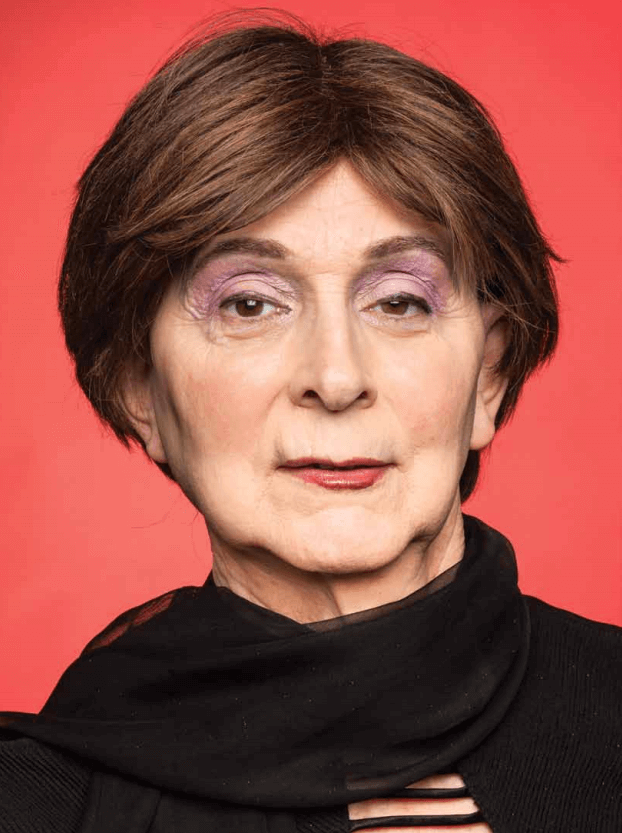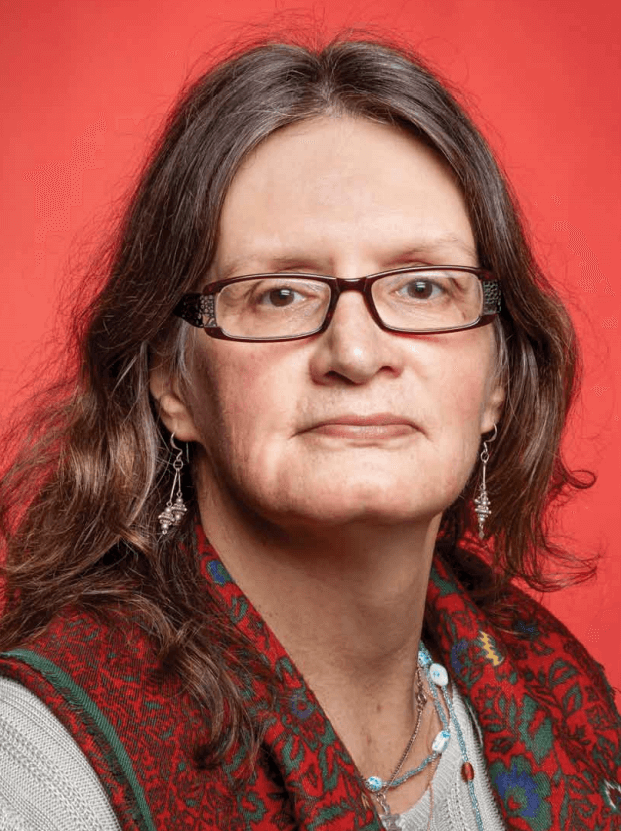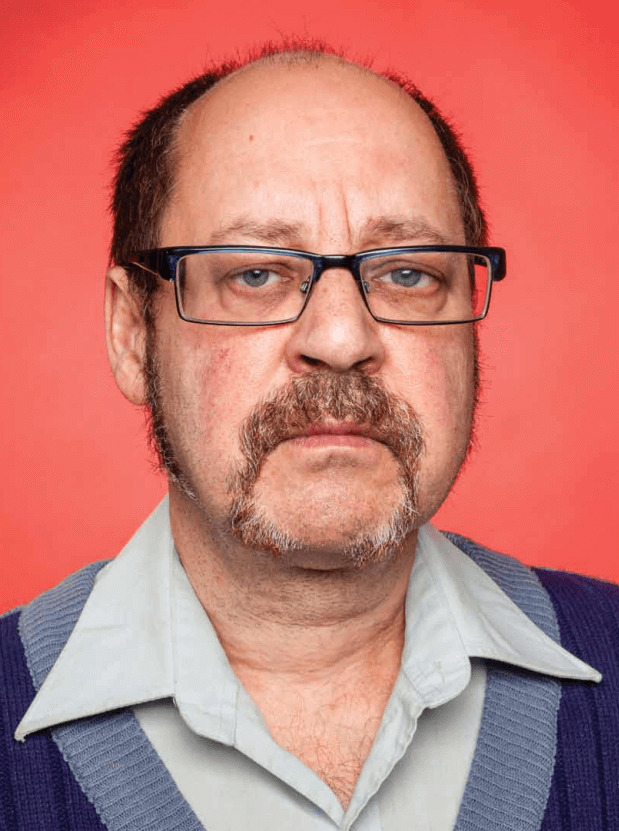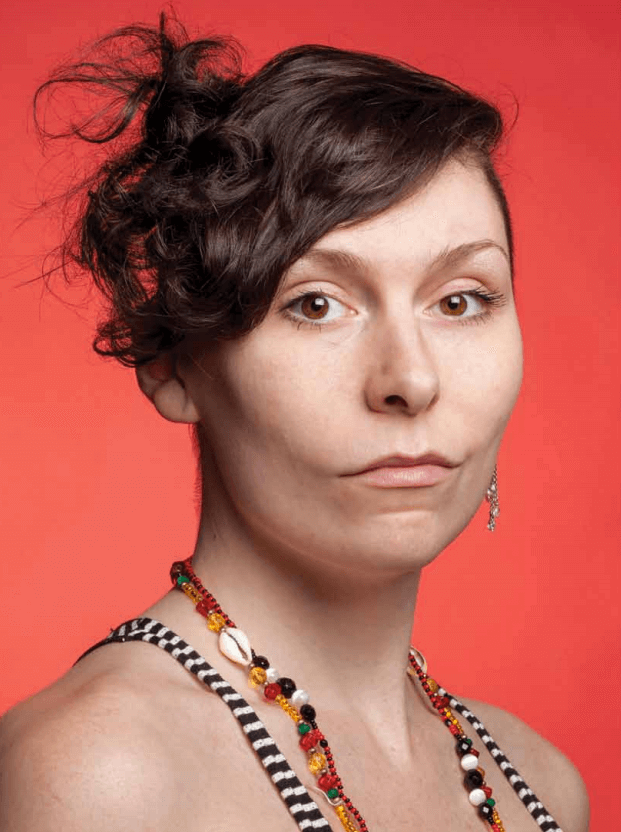Lives in Transition
Four trans Canadians share their heartbreaks, struggles, and fears. What their stories of bravery and activism can tell us about trans rights today
Alex Colgan
Transgendered men could sneak into public washrooms and molest your children—at least, according to Rob Anders. In 2012, after an NDP private member’s bill proposed that gender identity and gender expression be protected under the Canadian Human Rights Act and the Criminal Code, the Calgary MP posted a petition on his website. In it, Anders claims the goal of Bill C-279 is to give transgendered men access to women’s public washrooms. This is a problem, he says, because we must “protect and safeguard our children from any exposure and harm that will come from giving a man access to women’s public washroom facilities.” Several voices have joined that of Anders, including caucus colleague Dean Allison and REAL Women’s Diane Watts. Needless to say, the fact that similar provisions in the NWT, Manitoba, and Ontario have not resulted in disaster holds little sway with Anders or others.
Anders’ view of trans people fits neatly with the trans bogeyman that has been a staple of television and film for several decades—from Psycho’s Norman Bates to Buffalo Bill in Silence of the Lambs. The trans killer trope is a consistent point of reference on popular TV crime dramas such as Law & Order: Special Victims Unit and CSI. Such caricatures have been countered recently with a number of positive portrayals of trans people in popular media. However, almost without fail, these portrayals fail to place trans characters within a broader context. The virtuous gender-benders of Boys Don’t Cry and Rent stand alone, while the trans characters on Glee and Degrassi have no trans peers. To some extent, even these television characters become tokenized—reduced to a single theme, which is hammered home, over and over again. They are either tokens of fear, or tokens of tolerance and social progress.
In reality, there are many intersecting stories within the trans community, and there is more to transgenderism than the popular sinner/saint dichotomy of virtuous joie de vivre and sadomasochistic perversion. In this article, you’ll read four stories, interwoven through the history of transgenderism in Canada. They all live in Canada—people I met through common friends, and whose stories I heard through a series of phone interviews. They all feel privileged. They are middle class, educated, employed. They have the luxury of homes and telephone access and leisure time. But for each, their greatest privilege—one that is rare and precious—is that they are alive.
SHOSHANA, 66
 Sixty years ago, North American media extensively—and sensationally—covered U.S. native Christine Jorgensen’s hormone replacement therapy and sex change operations. EX-GI BECOMES BLONDE BEAUTY: OPERATIONS TRANSFORM BRONX YOUTH, screamed the front page of New York’s Daily News. While Jorgensen wasn’t the first person to have transition surgery, she was the first to become widely known for making the transition from male to female. Charming and articulate, she dove into public life, becoming a lifelong lecturer on the subject of transgenderism.
Sixty years ago, North American media extensively—and sensationally—covered U.S. native Christine Jorgensen’s hormone replacement therapy and sex change operations. EX-GI BECOMES BLONDE BEAUTY: OPERATIONS TRANSFORM BRONX YOUTH, screamed the front page of New York’s Daily News. While Jorgensen wasn’t the first person to have transition surgery, she was the first to become widely known for making the transition from male to female. Charming and articulate, she dove into public life, becoming a lifelong lecturer on the subject of transgenderism.
Despite the media sensation around Jorgensen’s groundbreaking surgery, there was a deep silence around transgenderism for decades, says Shoshana.* The world was brimming with new possibilities during Jorgensen’s time, but no one in Shoshana’s life was willing to acknowledge it.
Born into an Orthodox Jewish family in 1947, Shoshana first wore women’s clothing at the age of eight. “We moved to another house and there happened to be a woman’s sweater in the master bedroom. I went up there and put it on and it felt so comfortable. It felt right.”
Like many of her generation, though, Shoshana’s true gender identity would remain submerged for decades. In her experience, she says, homosexuality was taboo, while transgenderism was even further outside the realm of possibility. It was unthinkable.
Over the next four decades, Shoshana says she lived as a man, while still wearing women’s clothing on occasion. She married twice and divorced twice. In March 2005, after the failure of her second marriage, she hit upon this vein in a conversation with her psychiatrist. After doing a gender test on the internet, she went to see a therapist who happened to be a trans-man. “It was a big eye opener,” she says, “and I was honest with the guy.”
Things moved swiftly and Shoshana was on hormones by autumn. She had an orchiectomy in 2012—testicular removal surgery—and had her name legally changed to Shoshana in 2010. After beginning hormone treatment, she came into her own as an activist. “I used to be a wallflower,” she laughs. “Once I embraced who I was, instead of fighting myself, it was like I’m all there 24/7.”
She started to volunteer, and to speak out about her experiences. By 2008, she had given talks and presentations on the challenges of being an older trans person—aging gracefully in a world that often fails to understand her. She has faced down doctors, nurses, and medical technicians who disapprove of her name, appearance, and lifestyle. She fears that she will need to go to a nursing home later in life. After four decades of living as someone else, she isn’t ready to go back into the closet.
Listening to her talk about nursing homes is like listening to beat poetry. “Can you imagine being in a ward, and not being able to talk about your life experience? It’s like someone who has just lost a limb … I want to be able to talk about the kind of sex we had … I want people to talk about the parties we went to.
“You can’t do that. So you can sit there like a piece of wood. You can’t open your mouth because you’re afraid someone will come and judge you. Can you imagine the agony; the pain inside that the other person is going through?”
* We have agreed to withhold Shoshana’s last name
SUSAN GAPKA, MID-50s
 Susan Gapka grew up in Trenton, a small town with a military base in southern Ontario. She says she had feelings when she was young of wanting to be a woman, but also had no way of expressing those feelings. Gapka was drawn to wearing women’s clothing, like Shoshana, and describes growing up confused, ashamed, and guilty. Also like Shoshana, she’d heard about Jorgensen, and remembers being interested, but also says she couldn’t find much information. “There were no role models.”
Susan Gapka grew up in Trenton, a small town with a military base in southern Ontario. She says she had feelings when she was young of wanting to be a woman, but also had no way of expressing those feelings. Gapka was drawn to wearing women’s clothing, like Shoshana, and describes growing up confused, ashamed, and guilty. Also like Shoshana, she’d heard about Jorgensen, and remembers being interested, but also says she couldn’t find much information. “There were no role models.”
In school, when other boys started shaving, Gapka found that she had no facial hair, and instead shaved her legs. This seemed natural to her, not a big deal—until she told her classmates. Word got back to her teacher, who told Gapka, “No, we don’t talk about that stuff in here.” She learned to keep her feelings to herself. As a teenager, Gapka ran away from home and went to Toronto, after she encountered the book Once I Was a Man: Behold, I Am a Woman. The book, written by “Dianna” as told to Felicity Cochrane, is about Dianna’s life before and after her sex-change operation. Gapka read the book over and over and over again. But she still carried some misconceptions about gender identity and sexual orientation— how could she feel like a woman while also being attracted to women? She tried to push it aside and get on with life.
Gapka married, had children, and worked as a mechanic through the ’70s and ’80s. There was always a gnawing urge to live as a woman. Throughout the ’80s, her carefully constructed life began to unravel. Her mother, father, and sister all died. Her marriage broke up. At the same time, deep changes in Canadian society began to bubble their way to the surface, as the culture of silence began to dissolve. Gapka now believes the 1982 Charter of Rights and Freedoms is a marker that divides her generation—those who grew up in an era where being gay was a crime—from those that followed. At the time, though, she only saw that her life was a mess. “It became too much,” she says. “I ended up homeless on the streets of Toronto.”
Many trans people at the time were (and still are) homeless and destitute. Death could come in many forms: murder, hypothermia, drug overdoses, disease. Especially disease. In 1982, the AIDS epidemic, which had been slowly burning its way through Africa for a decade, extended its long grey finger into Canada. The horror of those years is often glossed over. It hit the trans community hard. In a society where being trans was already stigmatized, those with further stigmas—of age, race, and class—were doubly and triply damned. Many of the survivors of the epidemic, who now live with HIV/ AIDS, are still living on the street.
This wholesale erasure of thousands of trans people across North America left a deep and lasting mark. The epidemic eliminated most of the marginalized radicals within the community, who were soon replaced by predominantly middle-class, white trans women. The trans community shifted inwards—away from political activism and towards support groups. It wouldn’t be until the early ’90s that trans activism would ascend again.
After roughly 10 years of homelessness, it was also a time of change and renewal for Gapka. In 1997, she managed to get housing and began seeing a therapist. She was surprised to realize the desire to be a woman wasn’t a passing phase, beneath the surface, after all those years. She began to distinguish between gender identity and sexual orientation—realizing that people who transition can be attracted to the same sex. She started to explore these feelings, and by September 1999, she was living and working full-time as Susan Gapka. “When I changed, I went [to work] one week as my former self, and came back the next week as Susan. My life hasn’t been the same since.”
The first name is after a high-school confidante and crush. The last name is part of her original family name. Although Gapka bears no love for her father, it connects her with her heritage and culture. “There’s really nothing I want to remember about my father.” She laughs. “My father was a son of a bitch. But one of my pillars of strength … emerged from my inner child, connected to my history.” Around the holidays, Gapka says, she literally feeds her inner child, with Polish staples, like perogies and kielbasa. “That connection to my culture and my heritage has helped ground me. Sometimes with a great deal of sadness, but it grounds me nonetheless.”
RUPERT RAJ, 61
 Unlike many trans people his age, Rupert Raj began his transition as a teenager. Now 61, Rupert is a man of many stripes: psychotherapist, consultant, clinical researcher, educator, writer, professional trainer, and gender specialist. He has also been an advocate for trans rights in Canada and the U.S. for 42 years.
Unlike many trans people his age, Rupert Raj began his transition as a teenager. Now 61, Rupert is a man of many stripes: psychotherapist, consultant, clinical researcher, educator, writer, professional trainer, and gender specialist. He has also been an advocate for trans rights in Canada and the U.S. for 42 years.
Like Gapka and Shoshana, Raj’s journey began in childhood with clothing. While sharing a room with his sister, he would experiment with dressing in men’s clothing. In 1968, at the age of 16, he told his father. “I didn’t know the word ‘transsexual,’” he says. “I said, ‘I think I’m bisexual.’” He told his father that he felt like a boy on the inside, a girl on the outside. In response, Raj’s father told him he’d take Raj to a psychiatrist who, his father said, could show Raj that the life of a girl can be rewarding.
Raj would see several psychiatrists, but his parents wouldn’t live to see it. Four months after their conversations, both of his parents were killed in a car crash. This was the start of Raj’s journey. Although two of the psychiatrists that he met through the Royal Ottawa Hospital were transphobic by omission, there was one psychologist who Raj says was non-judgmental, even though she didn’t know very much about transgenderism.
Raj started living as a man in September 1971 in Ottawa, at the same time that he started his bachelor’s degree in psychology at Carleton University. So-called homosexual acts had only been decriminalized two years previously, after Pierre Trudeau’s famous declaration that there was “no place for the state in the bedrooms of the nation.”
His first steps into the world of trans advocacy began around the same time, when Raj tried to start a support group in Ottawa. He applied for an advertisement in the Ottawa Journal, which was promptly rejected. Later that year, he went to the Harry Benjamin Foundation—founded by a sexologist and endocrinologist renowned for his medical work with trans people—for his first male hormone shot. In 1972, Raj underwent top surgery in Yonkers with Dr. David R. Wesser, a reconstructive surgeon widely known for his work with transgender clients. The next year, the American Psychiatric Association declassified homosexuality as a mental disorder (although it would introduce the “gender identity disorder” in 1980, which remains controversial today).
Despite his challenges, Raj says he has been fortunate: He has never suffered transphobic violence. He attributes this to his relative position of privilege in the community. Raj appears white (though he is mixed-race), is educated, and was transitioning into manhood. “I think trans men are more accepted because of our patriarchic society,” he says, “although there are individuals, of course, who are victimized by harassment, abuse, discrimination. But collectively, I think it’s much harder for trans women.”
Passability—the ability to blend into the crowd without eliciting notice—is also a greater challenge to trans women. Among men, the absence of facial hair does not attract undue attention. Feminine features are dismissed as boyish. For trans women, however, the five o’clock shadow, strong jawline, and Adam’s apple are all potential betrayers. Lacking passing privilege can have serious consequences. In 2011, Halifax drag performer Elle Noir, was shot in the arm at her apartment by men who called her a “tranny faggot.” There are many more cases extending back through the years.
Unfortunately, there are no reliable figures on trans violence in Canada. However, the overall statistics for LGBT violence provide some indication of the problem. According to Statistics Canada, 13 percent of all hate crimes in 2009 were motivated by sexual orientation, and 74 percent of these crimes were violent in nature. This was far higher than the proportion of violent crimes motivated by race/ethnicity (39 percent) or religion (21 percent). Naturally, if someone is going to be attacked for being trans, they must first be identified as trans by their attackers.
As a result, the issue of passability straddles many natural fault lines within the trans community. Hormone replacement therapy and electrolysis can be expensive for those without insurance; and even when surgery is freely available, it has hidden costs like lost wages and travel expenses. Affluence and youth ease the transition, while poverty and age make it more difficult.
Passability, however, is a double-edged sword. It allows some to blend in and leaves others isolated. For some, the ability to pass as your true gender is marvellous. It’s easier to feel comfortable on the bus, at the office, walking down the street. But if passability is upheld as success—the completion of a journey—then those who fall behind, who cannot achieve passability, are necessarily labelled failures. Many trans activists are now tearing down the idol of passability in favour of a more fluid understanding of gender. New terms continually bubble to the surface—such as genderqueer, gender non-conforming, two-spirit, and ze/hir.
MORGAN PAGE, 26
 It wasn’t until around 1992—when trans activist Mirha-Soleil Ross moved from Montreal to Toronto—that there was a resurgence in trans activism. A video maker and sex worker, Ross was among the new wave of trans voices in the aftermath of the AIDS epidemic. Throughout the next decade, the trans movement would become increasingly political, with much of the organizing being done by sex workers.
It wasn’t until around 1992—when trans activist Mirha-Soleil Ross moved from Montreal to Toronto—that there was a resurgence in trans activism. A video maker and sex worker, Ross was among the new wave of trans voices in the aftermath of the AIDS epidemic. Throughout the next decade, the trans movement would become increasingly political, with much of the organizing being done by sex workers.
Nonetheless, the trans community operated mostly beneath the public radar until 1995, when the issue of transphobia made headlines across the country. Kimberly Nixon, a B.C. woman who had attempted to volunteer with Vancouver Rape Relief, was rejected on the grounds that she was trans. Despite an initial victory at the B.C. Human Rights Tribunal, Vancouver Rape Relief won on two separate appeals. The Nixon case politicized trans Canadians throughout the ’90s and early 2000s. With feminist groups across the country releasing statements on either side of the debate, it brought conversations about trans politics to activist communities across the country.
While the world of trans activism was changing, Morgan Page was going through her own struggles. Around the turn of the millennium, when she was 12, Page realized she was trans and queer. “I was what they would now call a gender-variant child or a gender-independent child,” she says. She began doing sex work and “a lot of drugs.”
Unlike her predecessors, there was no deep silence about the issue in her younger years. It was obvious to everyone in her life that she was queer, and possibly trans. She cultivated an androgynous appearance from the ages of 11 to 14. By the time she was 15, she had already been going to school in makeup and girls’ clothes, and was using a different name. Once the realization came—that she was a woman—she soon changed her name, started using female pronouns, and went on hormone treatments at age 16.
Her mother was mostly supportive, but acceptance at home didn’t mean tolerance elsewhere. Morgan was bullied so extensively that she was diagnosed with post-traumatic stress disorder, and suffered a nervous breakdown at the end of Grade 9. She dropped out of school. Her mother died when she was 18. Later, she became involved with a sex workers’ organization in Hamilton, doing drug outreach work, until she moved to Toronto.
Morgan’s introduction to activism was abrupt. In 2008, when she was 20, Morgan got a call from a friend. The Homewood Maitland Safety Association, a residents’ group, was harassing trans women sex workers who were working in their neighbourhood. There had been reports of physical assaults. She went to that night’s protest against the HMSA, and quickly became one of two leaders of six weeks of counter-protests on Friday and Saturday nights.
The next year, Page received her GED, and enrolled in George Brown College’s assaulted women and children’s counselor/advocate program. After a student placement at the 519 Church Street Community Centre—one of the cornerstones of Toronto’s LGBTTQ community—the centre hired her straight out of the program. Morgan has worked at the 519 for three years now, where she runs three programs—Meal Trans, Trans Youth Toronto, and Trans Sex Worker Outreach.
Transgenderism in Canada has come a long way over the past 60 years. The social networking age has made it easier for trans people to connect, as forums and message boards have increasingly given way to Facebook and Twitter. The anonymity of the internet—and its ability to unite like-minded people across great distances—is a far cry from the isolation of earlier decades. “We’ve seen online communities have become far, far more important to trans people than, I would say, any other kind of people,” says Page. “I basically met all my friends on the internet.”
Trans identity has changed over time and across generations, adds Page. In her line of work, she sees people who have been beaten down by life— poverty, homelessness, racism. Many transitioned later in life. They don’t see many opportunities for change. Transphobic violence still occurs in the streets and in homes. Bigotry persists in Canadian society, from the halls of government to the kitchen table. Surgery and services are often expensive and difficult to access. Trans Canadians face a mosaic of discrimination—from whispers on the street and discrimination in the workplace, to being held at the border when their passport picture doesn’t match their appearance. There is no shortage of issues to tackle, and it often seems like we lose as much ground as we gain. The future, like the past, remains dark and unresolved.
Photos by Toni Hafkenscheid.